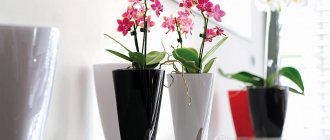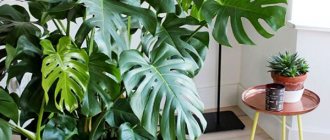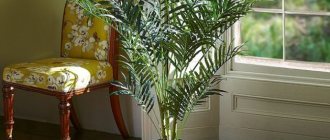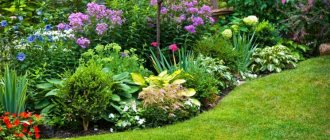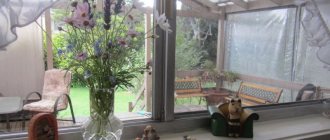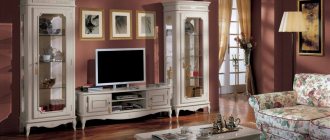In the exterior, green is, of course, the color of foliage that surrounds us on all sides, but we mostly do not notice it, we do not distinguish it from others, perceiving it solely as a background that sets off more saturated and bright colors. Many people think that in landscape design this shade is given a secondary role.
Compositions
Green blooms look very warm and cheerful when arranged with other bright red, orange and yellow buds! They also wonderfully complement burgundy and pink flowers, significantly enhancing the depth of their tone. At the same time, one cannot ignore the stunningly beautiful leaves of the popular hosta, which can present a huge range of silver, gray and yellow-green, emerald blue tones.
In this article we will learn the name of green flowers and also give their description.
Useful flowers for the home
There are several types of useful flowers for the home.
They are mainly used for medicinal purposes, as well as for oxygen purification, these include:
- Aloe . People often call it agave. This flower is simply a storehouse of useful properties. It is difficult to name all the diseases and injuries for which it is used, but most often it saves from colds, intestinal disorders, stomach pain, and also promotes the rapid healing of wounds and cuts.
- Kalanchoe. The flower was brought to us from Germany. It perfectly cleans oxygen from pathogenic bacteria, so that it will be difficult to catch a cold if such a protector is available in the house. Excellent against runny nose and sore throat.
Aloe
Kalanchoe
Spathiphyllum
Geranium - Spathiphyllum . An indispensable “vacuum cleaner” for cleaning indoor air. Actively fights all harmful substances in the air and enriches the space with the necessary amount of oxygen. All the advantages of the plant include the fact that it blooms very vigorously and beautifully, and this improves your mood in winter.
- Geranium. There is no better cure for depression than having this flower in the house. This natural antidepressant will improve sleep and normalize the nervous system.
When purchasing a plant, we must not forget about several poisonous representatives of the plant world, and these are dieffenbachia , oleander and azalea .
Dieffenbachia
Oleander
Azalea
Parrot tulips
It is worth mentioning separately about tulips, or more precisely, about a group of green-petaled late-flowering plants that are characterized by unusual beauty and long-lasting flowering. The backs of the tulip petals have a yellow-green tint, maintaining it throughout the flowering period. The contrast of shades between the edges of the petals and the middle, painted in different shades, has a stunning look. These yellow-green flowers are used for cutting and landscaping. It is also worth noting that today green-petaled tulips are incredibly popular.
The color of the petals also has a green tint. This is a peculiar group of plants in which the tepals are located horizontally when open and have a notched, irregular, jagged or fringed shape. Due to the wide-open large flowers, as well as the deeply cut edges of the petals, parrot tulips are more reminiscent of the splayed feathers of birds.
All summer the plant blooms small yellow-green flowers, collected in large numbers in false umbrellas. This is a herbaceous perennial plant. The stem, reaching 30 cm in height, rises arched upward. At the same time, the mantle forms a nice cover in semi-shaded places, although it can be successfully grown in the sun.
Tulips of the following varieties have green “strokes” on the petals:
- 'Parrot Insel' (green and white flowers).
- "Parrot King" (yellow-lime-white-green petals).
- "Ear" (pale lilac, a little apricot and rare green spots reminiscent of feathers).
- “Erna Lindgreen” (green stripes on a burgundy background).
- "Apricot Parrot" (red-yellow with green).
Parrot tulips are suitable for borders and borders. Planted along various paths, they will be able to fully demonstrate their amazing beauty.
Ampelous indoor plants and flowers photos and names
This catalog with photographs of indoor flowers contains crops that differ in appearance. They climb and their shoots often hang out of the pot. Therefore, plants are often grown in hanging flowerpots.
Akalifa
The plant belongs to the Euphorbiaceae family with unusual flowering. Australia is considered the birthplace of the culture. Translated from Latin, acalypha means "nettle" due to the similarity of the leaves. The flowers were popularly called “fox tail”. The leaves are presented in the form of an elongated oval hanging from the shoots. The inflorescences are interesting, purple-red in color. It can grow up to half a meter in length.
Another type of this plant has golden-purple, oval-shaped leaves up to 22 cm long. The inflorescences are small, up to eight centimeters, red.
Campanula (Bride and Groom)
The flower is very popular among gardeners. The plant received its romantic name because of its delicate flowers (blue, white, lilac). The culture is like bluebells. Today, many species are cultivated and used in indoor floriculture.
Alsobia
Groundcover, creeping perennial with red and soft stems. Belongs to the Gesneriev family. The plant's homeland is considered to be the shady forests of South America. Many hybrid varieties have been cultivated and grown indoors. Their length reaches two meters.
The leaves of the flower are oval green. Dark veins and a lot of fibers are visible on the upper part. Single inflorescences look like tubes with a velvet edging. Most often their color is white or with red spots. The length of the tube can grow up to 6 cm, the diameter of the flower is 2.5 cm.
Setcreasia purpurea
The evergreen perennial has succulent shoots up to 1 m. The indoor flower is characterized by broadly lanceolate leaves up to 10 cm in length. The front side of the leaves is violet-green; the reverse side is purple with edges. It blooms for a long time from mid-spring to late summer. The inflorescences are small pink-purple with three petals, collected in miniature inflorescences at the ends of the shoots.
Neoalsomitra sarcophylla
Evergreen indoor plant. Perennial. The flower is spherical in shape, up to 15 cm in diameter. Shoots with tendrils grow up to 4 m. The tendrils twist into a spiral, while their tips bifurcate and have suction cups. With their help, the plant clings to the support. The leaves are oval, smooth. The flowers are unisexual, cream or cream-green. Female types are solitary, male types are part of small inflorescences.
Basella
Decorative indoor flower. Representative of the Basellaceae. It is found naturally in the USA, India, New Guinea, Africa and the Pacific Islands. Another name for the domestic flower is “Malabar spinach”.
Basella is a warm-loving vine. The leaves are ovate or heart-shaped with a sharp tip. They grow up to 12 cm. The foliage has a delicate aroma.
Amaranth caudate
Many of us have the opportunity in the summer to look at interesting flowers with green flowers called amaranth caudate. This coloring of flowers is generally uncharacteristic for the plant and is very rare. Dark red and crimson flowers are much more common. They are collected in spherical dense balls, which, united into paniculate long (periodically up to 1.5 meters) inflorescences, like tails, fall down. This is an extraordinary sight!
Bulbous indoor plants photos and names
The catalog presents indoor flowers with shoots in the form of bulbs. It is in them that plants accumulate useful substances. Many crops completely shed their leaves during the rest period. Most of the domestic flora representatives have beautiful and large flowers. Only a few are valued for their unusual leaf shape.
Hemanthus
The culture grows in Africa. It grows in height up to 30-40 cm. It is distinguished by shaggy inflorescences. It blooms in red and beige, usually in spring and summer. From one bulb grows 2-6 leaves, fleshy or transversely leathery. At home, only hybrid species are found.
Weltheimia
The flower grows up to 60 cm with large roots, bare plump stems, and mundane leaves. A peduncle with thick clusters of red, pink, yellow tones blooms in a cool room from January to March. The inflorescence is unique and showy. Depending on the conditions of detention, it can live from 1 to 5 years.
Freesia
All varieties of indoor plants are fragrant. Freesia grows 30-45 cm in length. The pedicels are soft orange, yellow, bright red, crimson, and whitish.
Hymenocallis
The home plant is distinguished by its unusual, original white buds, presented in the form of an umbrella, on which dozens of flowers are formed. The culture smells good. The plant is considered an unpretentious indoor flower. It is grown in different conditions (it will refuse to bloom in a dark room). In Greek, the name of the flower Hymenocallis means “beautiful film.” After looking at the photographs from the catalog, you will understand why it was called that.
Gloriosa
This is a crop with thin stems that requires staking to a support. A dwarf houseplant rarely grows above 30 cm. The leaves are ovate. The legs are long. At their top, pedicels of soft yellow, red-green, purple, and crimson shades appear.
Eucomis
People call the flower “pineapple” because... its inflorescences look like an extraordinary fruit. The plant grows up to 70 cm in height, blooms only after 6-8 leaves appear. Peduncles look like small bells of a white-yellow or bur-green hue. In order for the crop to bloom vigorously, it is recommended to place it on the south side, darkening it from the direct rays of the sun.
Daffodils
Grows up to 20 cm. Has linear leaves, stems without leaves. On one pedicel, 2-10 flowers of different sizes and colors can form.
The flower is characterized by a delicate aroma. Grows both in a pot and in open ground.
Amaranth paniculata
Amaranth paniculata may have green and white flowers. One of these varieties is “rushnichok”. Its unusualness lies in the inflorescences of a green hue with burgundy, brightly colored tips of the brushes, reminiscent of cross-stitched patterns. Hence the unusual name.
Amaranths, especially tall varieties, look impressive in solitary and group plantings. They are also appropriate near fences and walls, in the background of various flower beds. At the same time, the short ones will find a place in the border or ridge.
Indoor violet (Saintpaulia)
Indoor violet - many people associate it with the arrival of spring, and the leaves of the plant, shaped like a heart, are considered a talisman for lovers. Extremely unpretentious, but blooming almost all year round, Saintpaulias have a positive effect on the atmosphere in the house: they awaken in a person a desire to act, develop sociability and love of life, and bring joy and harmony to the house. They have a soft, calming energy, help to tune into a positive mood, get rid of tension and insomnia. In a house where violets bloom, love and harmony reign. The influence of violets on humans is multifaceted, it all depends on the color of their flowers.
White Saintpaulias will be appropriate in any room. They calm, relieve anxiety and worries, help cope with excessive irritability and fatigue, clear the space from the negative influence of bad thoughts, and help keep the house clean.
Pink and red Saintpaulias are best placed in the kitchen. They harmonize the energy in the home, protect against illness, improve mood, give a feeling of calm, help a person feel the joy of communication and work, and get rid of bad habits, in particular, overeating.
Violets with blue flowers are especially useful for creative people. They relieve despondency and apathy, help cope with depression, give inspiration, fill space with creative energy, and help a person reveal his creative potential.
Saintpaulias with purple flowers clear the space of the energy of mistrust, help achieve mutual understanding between the residents of the house, promote spiritual growth, elevating thoughts, strengthening character, and developing intuition. True, they have no place in children's rooms and offices.
Green roses
If we consider green flowers (the names of some of them are given in this article), it should be noted that roses have a special place among them. Today it is still a novelty, and little studied at that. Nowadays it is very fashionable to order bouquets of such flowers for various celebrations. They, according to various flower companies, signify abundance, generosity, stability and balance, hence it is believed that they should be given to successful people, in addition, to anyone who wants to become one.
It is important to acquire such a “green talisman” right now, during a crisis. In this case, it is better if this plant is not cut, but alive, pleasing to the eye in your own garden with its unusual flowering. But it is very difficult to find accurate information about green roses, their names, methods of growing them, etc. In different sources you can only find “grains”, which we’ll talk about now.
What color is best for the facade?
When you have figured out the material for painting the house, all that remains is to choose the color of the facade in which you will paint it. The color scheme largely determines the design of the entire home, but the selection must be made based on various factors - the style of the landscape and personal preference.
A good solution for painting would be neutral natural shades that will harmoniously fit into the surrounding environment and will not hurt the eye. These colors include brown, beige, gray and blue.
If you want to paint the outside of your house in loud colors, you will attract attention, but over time they will become familiar and boring. Therefore, you should paint the facade scarlet, purple or pink only if you really love these colors.
When constructing and painting a building, you need to skillfully combine the color of the facade with the decoration of the home. But you don’t have to paint it in related tones; you can play with contrast. Light walls and dark roof and door look good.
Before painting the facade, you need to familiarize yourself with some rules that will help you decide.
The color of the walls should be different from the roof. For example, a building with a red roof will look good if the facade is white or light yellow. Also, the color should be in harmony with the material of the home itself used in construction.
It's best to use three different color swatches to paint a consistent theme throughout your home: a base color, an accent color, and a decor color.
Varieties of green roses
The green rose flower can be of different varieties - Jade, Limbo, Limona, Melannie. Although what is today considered a green rose is actually a plant with yellow-light green flowers.
One of the best such varieties is the Green rosa variety - these are green flowers, the names of which are often associated with the symbol of a tender feeling of love reborn after a round of life or just emerging.
This information will be of interest to those who want to grow such a bush themselves. This beauty can be created from simple roses. To do this, some flower growers advise planting vyazozheld (or ostrokrov) near the rose bush - this is an evergreen plant distinguished by red poisonous berries and prickly leaves. When it puts out the first shoots, you need to make a small hole in one, into which you then thread and bend a rose twig. Then this “wound” is connected, carefully tying it with hemp rope so that it does not allow air to pass through and does not diverge. When the point on the pink twig produces the first shoot, it is completely freed. In this way, a green flower is then produced on the rose bush.
Bathroom interior plants
To the surprise of many, you can also organize your own mini-garden in the bathroom. The bathroom has an individual microclimate, sharply different from other rooms. High humidity and temperature fluctuations should definitely be taken into account when arranging plants in the interior of the bathroom - after all, not every green space can withstand such conditions. The choice should also be based on the size of the room. For example, a small bathtub will be beautifully complemented by climbing ivy and philodendron. Larger rooms will be complemented by shrubby aspidistra, and plants in the interior of a spacious bathroom are Dieffenbachia, ficus, and alocasia. All of them will help create a pleasant, relaxing atmosphere.
In conclusion, I would like to say about a somewhat new style for our latitudes - Japanese, which, nevertheless, managed to spread its roots in the design of premises. When choosing plants for a Japanese interior, opt for several small crops - let it be a bonsai tree or one or two orchids. In the east, it is customary to admire the beauty of one flower rather than lush thickets.
Love your indoor plants, take care of them - then they will undoubtedly give you all their beauty and vitality.
Green gladioli
In addition to roses, gladioli can also have green flowers. Of course, this is exotic; such plants are very rare. That's why they are valuable. Moreover, some of these varieties were bred a long time ago and are well known to a narrow circle of unusual lovers and enthusiasts. Thus, in 1978, the Emerald Ripples variety appeared, which is still considered the leader among all green gladioli, as it has the most saturated shade in its group. Its flowers have a round, corrugated shape and are arranged in two rows. They will not leave anyone indifferent.
Also known is a variety called Green With Envey with juicy light green flowers.
Among the new varieties that are popular today are the varieties “Our Garden” (distinguished by strongly frilled light green flowers with pinches in the throat), “Green Malachite” (dark green flowers), and “Green Cockatoo”.
Also included in the green group is the “Golden Cup” variety with greenish-yellow buds.
Clerodendrum
Translated into Russian it means “Tree of Fate”. A powerful, original vine with creeping branches up to 400 cm and slightly wrinkled velvet petals with a cluster of veins. From the composition of verbenas; the lashes have to be regularly pinched and trimmed.
Temperature and humidity conditions are important. Clerodendrum does not have suction cups and is attached to a stand. Racemose inflorescences resemble a bell turned upward with a scarlet parapetal. Their tone changes as they unfold.
Green chrysanthemums
At the beginning of autumn, the Revert chrysanthemum variety blooms a green flower. The name was given to it by Carl Linnaeus. It means "golden flower".
Although the buds of these chrysanthemums can be colored either yellow or bright green. It is a natural greenish color that fades as it blooms to a soft yellow. The greenery is retained exclusively at the ends of the petals. But even with this color (not pure green), large, about 15 cm in diameter, chrysanthemum flowers look very beautiful and a little unusual.
I would like to think that all of the information listed will inspire some ordinary amateur gardener or landscape designer to create a beautiful green garden. Of course, this beauty is not for everyone.
Although, if not the whole plot, then its individual corners, it is still worth trying, decorating them using a green palette to create flower arrangements. However, it is advisable to remember that such flowers may look painful next to blue and blue ones, but if you place orange next to them, they can glow with heat.
There is no need to ignore the green tint and be afraid of various experiments with colors.
Common myrtle
Myrtle (myrtle tree) is not only a very beautiful plant, but also an extremely useful plant for humans. It is considered a symbol of family happiness and the guardian of the hearth. In Ancient Greece, brave warriors were honored with graceful branches of myrtle, wreaths were woven from them for brides, and cooks used the dried leaves of the plant for cooking.
During flowering, myrtle is covered with small, star-like flowers. But it pleases its owners not only with its attractive appearance, but also with its multifaceted healing properties. The plant destroys about 40% of pathogenic microorganisms present in the air, thereby reducing the risk of colds. The smell of myrtle cleanses the mind, has an enlightening effect, helps a person restore harmony with the outside world, and brings peace and happiness to the home.
Myrtle oil is very popular among perfumers. And herbalists consider myrtle to be a universal plant. It is used to treat allergies, blood and eye diseases, intestinal and bladder diseases, as an antitumor and anti-inflammatory agent. Myrtle grows well and can be used for decorative purposes to create bonsai. Myrtle is also suitable for decorating a winter garden, and due to its shade tolerance, it is suitable for interior landscaping.





